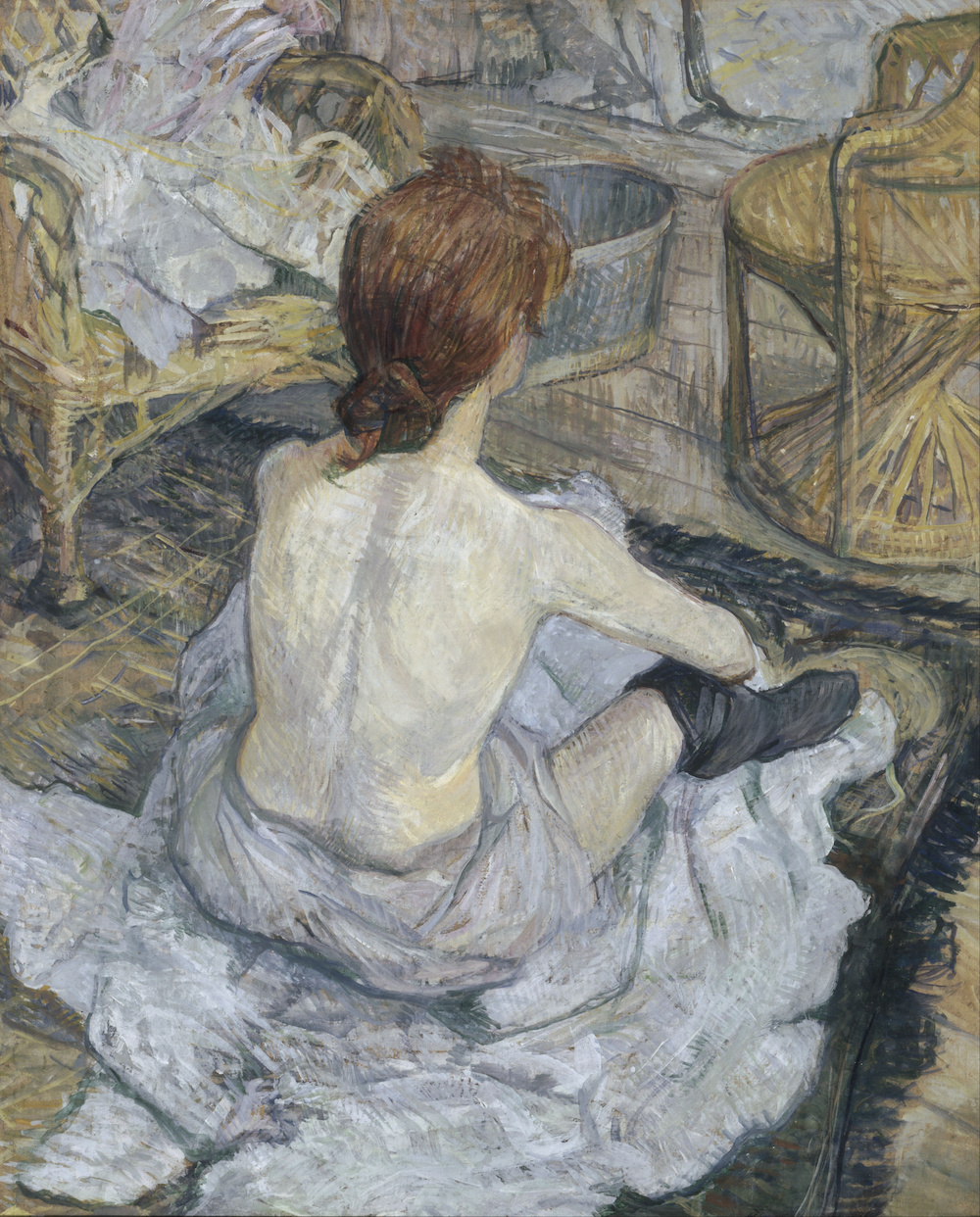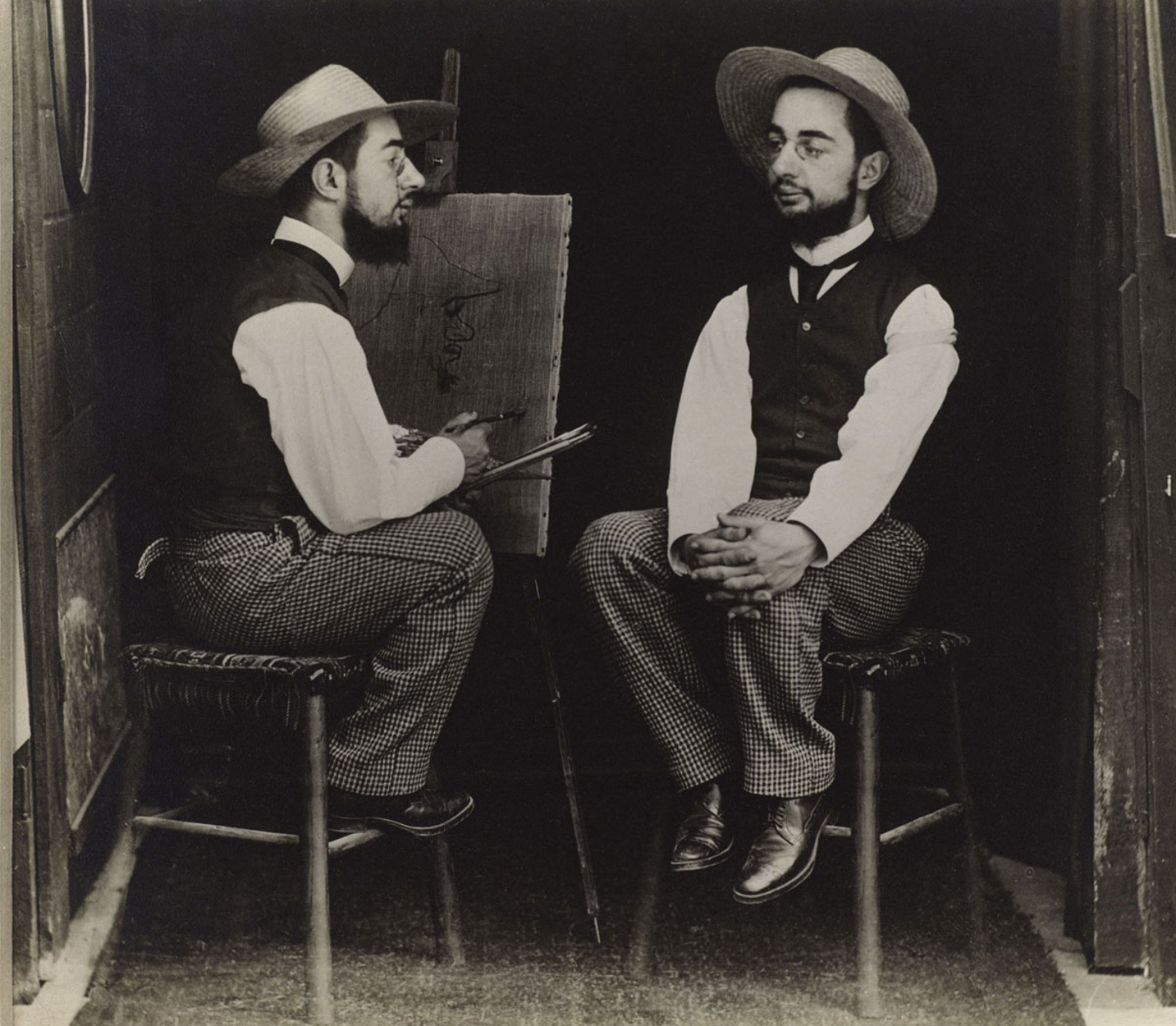Toulouse-Lautrec had produced countless pictures of women in private moments, often at their toilet. This close up of a woman fills the center of the composition, offering the spectator a view of a sculptural back. The wicker chairs around her suggest that the scene took place in the artist's studio, rue Caulaincourt. Although at the time the theme of a woman at her toilet was often explored, especially by Mary Cassatt and Bonnard, it was above all the naturalist influence of the impressionist Edgar Degas which dominates in this painting by Lautrec. The neglect of the academic pose and the accelerated perspective was rather unusual in Lautrec's work and echoed the series of women at their toilet that Degas presented at the eighth and last Impressionist exhibition in 1886. The framing of the scene and the high viewpoint bring to mind the masterly pastels by Degas whom Lautrec deeply admired. Like his elder, Lautrec showed women "without their frills" as if he were "peeping through the keyhole". However, he differs from Degas in the humanity with which he observed and painted them. This painting has led to a number of misunderstandings. Indeed, it has had several titles and its date has been changed. It has now been established that it was painted in 1889 and not in 1896 as is stated in old catalogues. It is certainly this work which Lautrec exhibited under the name of Rousse in the Exhibition of Les XX (an avant-garde art group) in Brussels in 1890. This title, chosen by the artist himself, recalled his preference for the red-haired models he painted all his life, possibly, one of his favorite models, Carmen Gaudin.




Rousse
oil on cardboard • 67 x 74 cm
 Henri de Toulouse-Lautrec
Henri de Toulouse-Lautrec